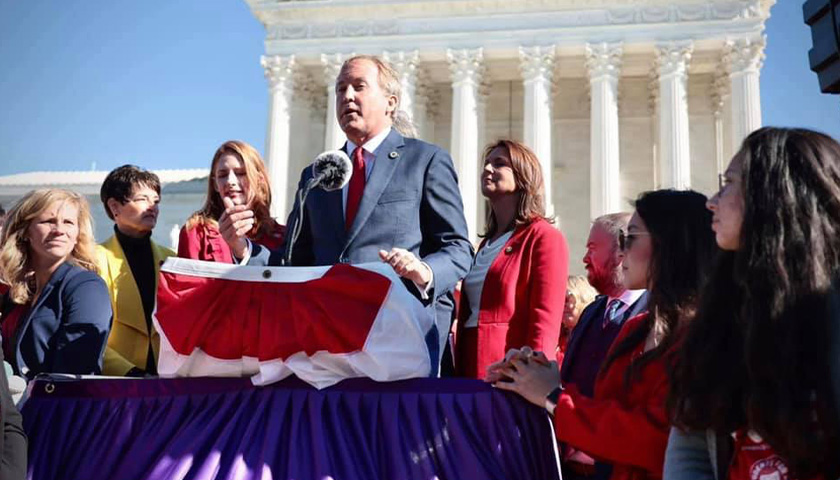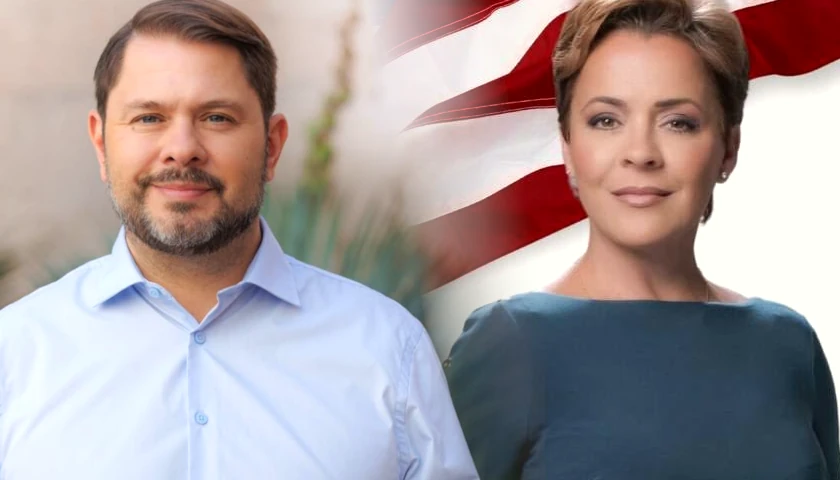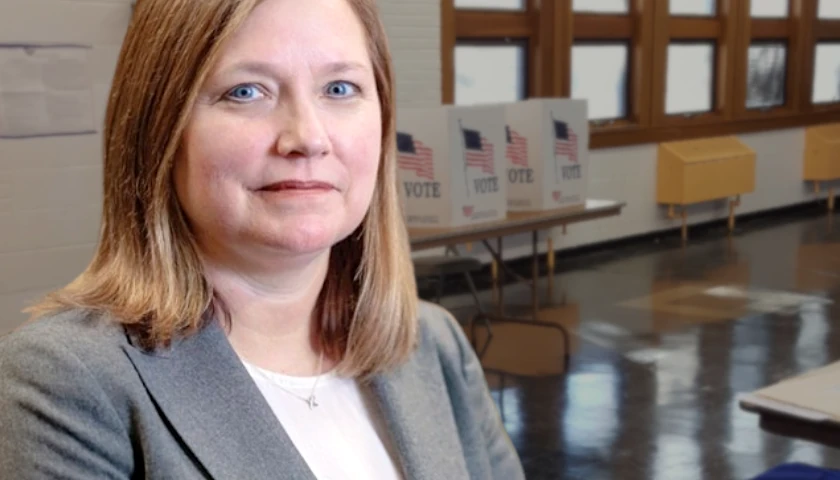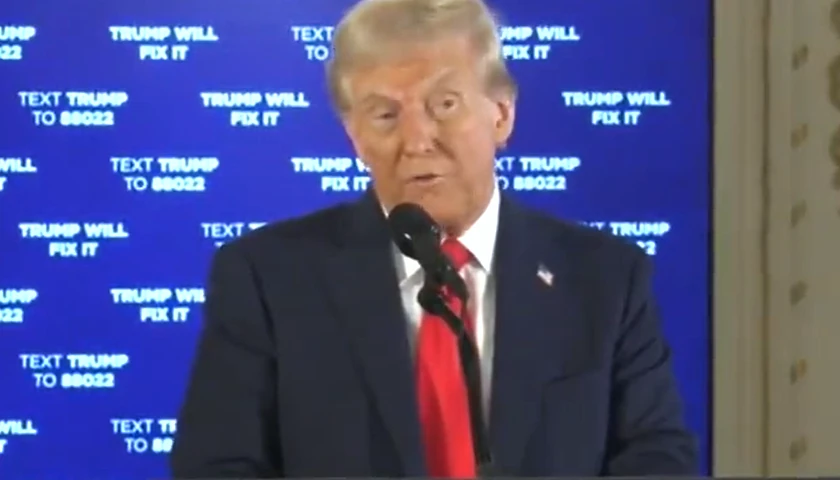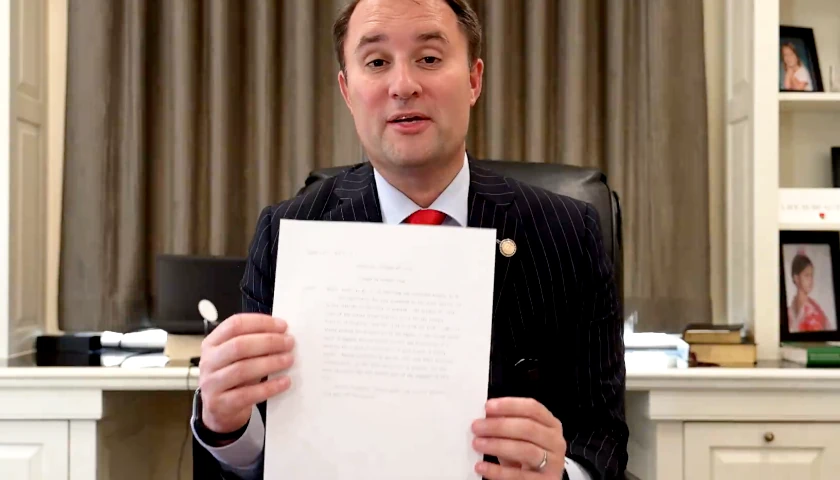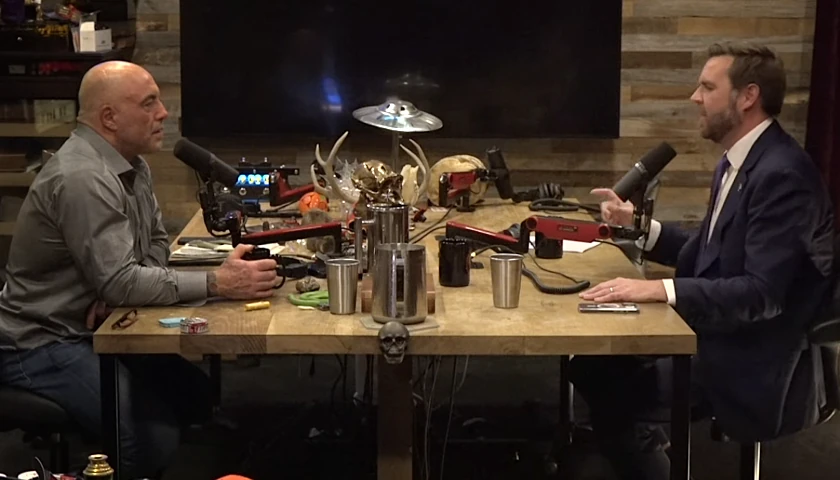by Bethany Blankley
A 174-page report released by the Office of the Attorney General (OAG) in August 2021, made public before voters reelected Attorney General Ken Paxton to a third term in November 2022, disproved claims presented by Democratically-aligned counsel hired by the House General Investigating Committee (GIC).
Another report released Saturday by an outside law firm, Lewis Brisbois Bisgaard & Smith LLP, also concluded, “significant evidence to show the actions of the OAG toward the Complainants were based on legitimate, non-retaliatory, business grounds.”
The report came in the hours after the impeachment vote.
Instead, Paxton said the House GIC orchestrated a secretive investigation and presented inaccurate information, “falsehoods, and misstatements” without interviewing or requesting information from the OAG on Wednesday. Its findings were used to issue 20 articles of impeachment and the basis to impeach AG Paxton 48 hours later. The House voted 121-23 late Saturday to impeach an attorney general for the first time in Texas history.
House officials involved in the impeachment process weren’t immediately available to comment on the latest report Sunday.
The investigation relates to the OAG firing several former OAG political appointees. Four sued, alleging wrongful termination. They claim they were retaliated against when they alleged Paxton engaged in misconduct and/or violated the law.
Seven had filed complaints: Jeff Mateer, Ryan Bangert, Lacey Mase, Ryan Vassar, Mark Penley, Blake Brickman, and Darren McCarty. Four sued: Vassar, Maxwell, Penley and Brickman.
The Lewis Brisbois Bisgaard & Smith LLP report refutes the former employees’ claims, including stating, “there is no evidence supporting the allegation that the Attorney General’s hiring of First Assistant Webster was part of a conspiracy to retaliate against the Complainants;” “Sergeant Gonzales did not attend meetings to intimidate witnesses;” “The press releases the OAG issued after the Complainants alleged wrongdoing are not acts of retaliation,” among others.
It also gives evidence to support its conclusion that the AOG “had valid, non-retaliatory reasons for dismissing” two of the plaintiffs, Maxwell and Penley.
It also shows that Mateer authorized an outside counsel contract that was in question and concluded, “Ryan Vassar’s conduct impeded OAG’s mission and likely violated state or federal Law.”
It also provides evidence to explain why Brickman’s “insubordination justified his dismissal” and why Mase, who “sought to use OAG resources to obtain personal legal advice,” was fired “on legitimate, non-retaliatory grounds.”
The GIC wouldn’t allow any of this evidence to be presented in the House. The only information provided to the House was a video and transcript of a hearing at which Democratic counsel hired by the GIC spoke about over a dozen people who were interviewed. No transcripts of their interviews were provided.
No sworn testimony was presented. No direct witnesses spoke to members of the committee under oath or to members of the full House. No documentary evidence was provided to the GIC or full House. Highlighting these and other facts, those opposing the impeachment process said no due process was being followed in the impeachment process.
The committee’s “politically motivated investigation,” the OAG said in a statement on Saturday, “is predicated on long-disproven claims grounded in hearsay and gossip. In August of 2021, after nearly a year of diligent investigation into these claims from former employees, the Office of the Attorney General released an exhaustive report that ultimately refuted each of the former employees’ allegations. In that report, the OAG stated it would further investigate the allegations and supplement as necessary. Subsequently, the OAG retained an outside law firm to conduct further investigation into the claims of retaliation by the former employees.”
The OAG 2021 report and the Lewis Brisbois Bisgaard & Smith LLP’s reports include information the GIC transcript does not: evidence, including direct witness testimony, emails, copies of signed documents, among others.
The 2021 report, for example, includes a DocuSign time-stamped approval signature that disproves a claim former employees made that “staff” notified Paxton that they wouldn’t approve a request.
In another example, when asked under oath, “Did you come to believe that the Office of Attorney General was being engaged in ongoing criminal activity in connection with Nate Paul,” Mateer couldn’t answer the question or provide evidence related to alleged criminal activity.
He replied, “I know it called for yes or no, but it’s a question that it’s hard to give a yes or no, so that makes it difficult for me—as—as the witness. What I would say is it—it could have led to that. Certainly, it’s—did I have concerns? I had potential concerns.”
On Thursday, Chris Hilton, chief of the OAG General Litigation Division, sought to testify before the GIC and submit the 2021 report as evidence. The GIC refused.
The OAG’s office said the GIC was “not interested in the truth. They were interested only in crafting a highly curated, one-sided case to overthrow the will of the voters.”
Paxton and others argue the impeachment process was illegal because it violated state law.
– – –
Bethany Blankley is a regular contributor to The Center Square.
Photo “Ken Paxton” by Ken Paxton.

